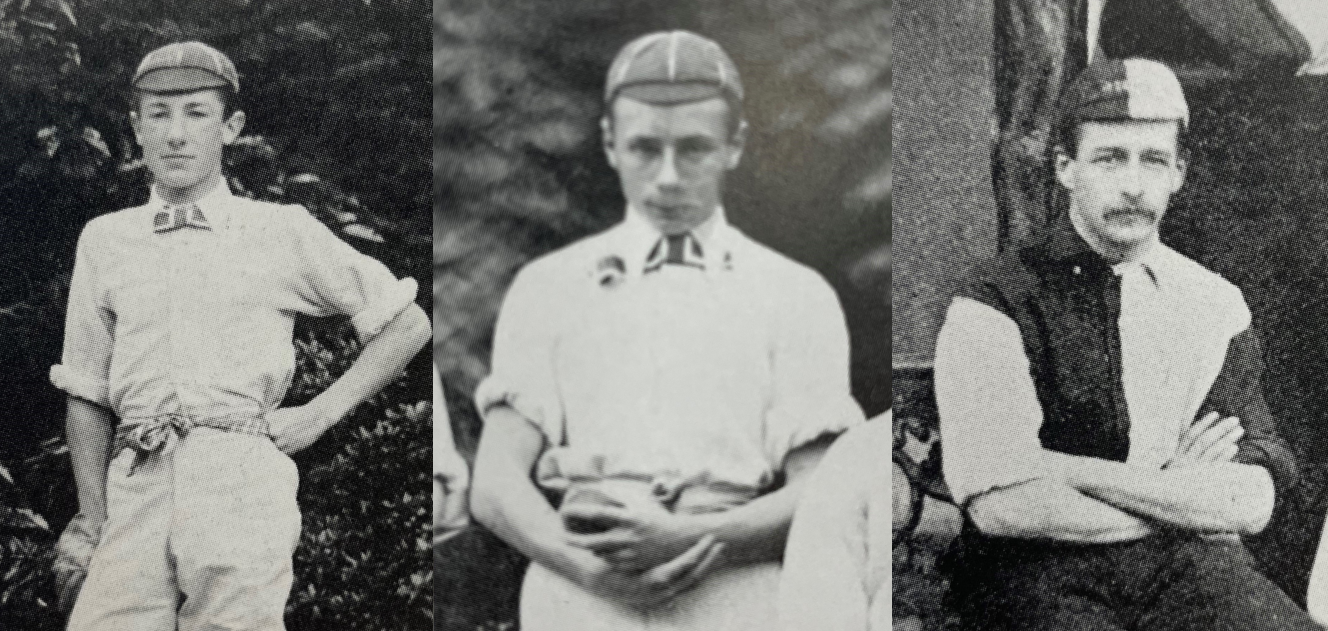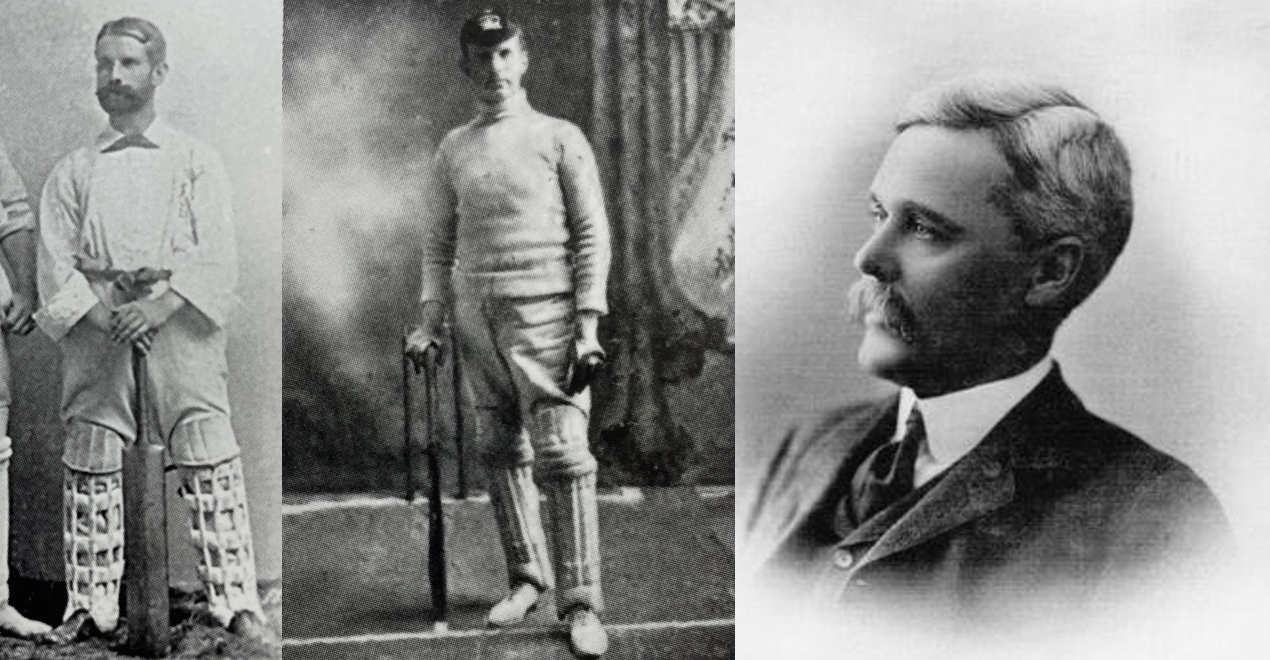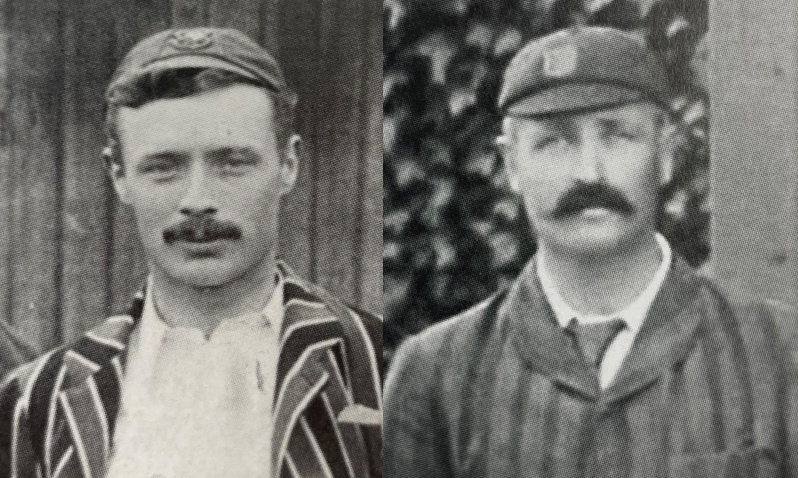
Those who came before: A look at Somerset’s First Class players – Part Two
When Josh Thomas walked out to bat on his full Somerset debut against Essex, he became the 698th player to represent the Club in First Class Cricket.
With this in mind, we thought we would take a look back at those who have come before.
Over the next few weeks, we’ll be taking a look back at some of the previous 697 players who have worn the Wyvern (or donned the Dragon) in red ball cricket.
#12 – Dudley Pontifex
Pontifex was born in Weston in 1855.
He attended Trinity College, Cambridge and although he didn’t make the University cricket XI, he was awarded a blue in billiards and indeed won the title of best billiards player at the university three years running. He also played tournament tennis.
After graduating he pursued a career in law.
Having played for the Gentleman of Somerset in 1877, his First Class debut came for Surrey in 1881. He featured for them on nine occasions.
In 1882 he played his only First Class match for Somerset against Gloucestershire, where he was living at the time, scoring 15 runs. His commitments as a barrister limited his availability as a cricketer but we would go on to represent the MCC in a number of First Class fixtures.
In 1889 he is credited as being a part of the largest stand by two men wearing spectacles; 159 with Hamilton Ross for Lansdown CC.
Pontifex passed away at the age 79 in 1934.
#13 – William Massey
Born in Manchester in 1850, Massey and his brother played rugby for Free Wanderers and cricket for St Helens.
He arrived in the West Country when he purchased an ailing silk manufacturing company in Ottery St Mary. He then became a partner of John Collin Newbery in the firm of J.C. Newbery & Co. in 1874.
He played cricket for Ottery St Mary, Sidmouth and the Gentleman of Devon. Indeed he featured for Devon’s Gentlemen against the Gentlemen of Somerset at Sidmouth on the day that Somerset CCC was founded.
A keen athlete, he played fullback for Exeter Rugby Club and captained Devon’s rugby side. In 1879 he also captained the Somerset rugby team.
His only First Class appearance for Somerset came in 1882He also played a First Class match for Lancashire the following year.
He emigrated to America in 1885 and played for Staten Island against a touring England XI a year later.
Legend has it that Massey once accumulated 1,998 runs in a season and arranged a further match in order to achieve the remaining two runs required to finish on 2,000 runs only for him to get a pair.
He passed away suddenly at the age of 49 in 1899 on a trip to New York.
#14 – Robert Christian Ramsey
‘Bob’ Ramsey was born in Cheltenham in 1861. His family had emigrated to Queensland in 1839 and were on an extended visit to England when he entered the world. When his father retired and the family returned to the UK, Ramsey and his brother were sent Elstree Preparatory School and then on to Harrow. They excelled in sport and once took 17 Eton wickets between them in the annual fixture at Lord’s.
Originally a pace bowler, he had become a leg spinner of some repute by the time he left Harrow. He continued to play the game at Trinity Hall, Cambridge, earning his blue in 1882. That same year, he claimed 12 wickets in the match as Cambridge University beat the touring Australians.
He opted not to complete his degree and relocated to Wells, where his parents were residing.
He featured for Somerset in four First Class matches in 1882, claiming nine wickets at an average 32.11 with a best of four for 50. He also scored 145 runs at an average of 20.71 with a best of 71.
He returned to Australia and became a sheep farmer like his father before him.
In 1920 he returned to England to live in Kent where he learned to fly and gained his pilot’s licence at the age of 69. He is widely regarded to have been the oldest pilot in the country.
He died in June 1957 at the age of 95.

# 15 – Charles Francis Long Sweet
Born in Bath in 1860, Sweet, the eldest son of a clergyman, was educated at Winchester College before going on to gain a BA in Modern History at Keble College, Oxford.
As a schoolboy he appeared for Somerset in two non First Class matches and he captained the Keble College side in 1882. He played rugby for the College and also captained them for two years in football. It was in football that he was awarded his blue.
His five First Class matches for Somerset yielded 67 runs and three catches. He also played for Dorset and Wiltshire.
In 1885 he was appointed as curate at Paignton. Two years later he became curate of of Bere Regis and Winterborne Kingston in Wiltshire.
In 1893 he became the vicar of Milton Lilborne before taking up the role at Stourpaine in Dorset in 1902. From 1914 until his retirement in 1930 he was the Rector of Symondsbury. He was instrumental in reviving Symondsbury Cricket Club and was their president for a number of years.
He passed away at the age of 71 in Teignmouth.
#16 – Richard Ernest Hall
Born in August 1861, Hall was educated at Marlborough College where he played for the First XI in 1879.
A left-arm pace bowler, he played his club cricket for Lansdown.
His only First Class appearance for Somerset came in 1882 against Gloucestershire. He claimed one for 21 and scored seven runs.
He began a military career after leaving school and became a lieutenant in the 2nd Royal Cheshire Militia in 1881. He saw service in Dublin with the Manchester Regiment before returning to England with the rank of Major.
He saw more active service in Pretoria as a Lieutenant Colonel in 1904.
He resided in Weston-super-Mare with his wife but died in Westminster in 1924 at the age of 63
#17 – Francis John Hill
The brother of Richard Ernest Hill (see above), Francis was born in October 1862.
Frank, as he was known, attended Marlborough College and Exeter College, Oxford University but didn’t complete his degree.
He played cricket for Marlborough College and played alongside his brother for Lansdown CC.
Frank’s solitary First Class match for Somerset came against Hampshire in 1882 at Southampton. He scored 29 and two.
He also played rugby for Bath and Somerset.
In 1883 he emigrated to Canada to begin a new life as a rancher.
He died at the age of 76 in 1939.
#18 – Francis William Terry
Born in Mells near Frome in 1860, Terry was the son of a local GP. His brother followed their father into the medical profession but Francis entered the ministry.
In his youth he attended St Edward’s School, Oxford before studying at Merton College.
A more than useful ‘keeper/batter, he represented Somerset on 10 occasions between 1882 and 1885, scoring 552 runs at an average of 32.47 with a best of 121. He also claimed 13 catches and two stumpings.
In 1886 he left the county to take up the curacy at Horsham. He held the position for six years before emigrating to Canada.
He excelled in his new home, captaining the national team on a number of occasions, and becoming the leading scorer of centuries in club cricket. His score of 111 against the USA in 1893 was the highest total by a Canadian batter in international cricket for 70 years.
He returned to England briefly in 1900 as a curate at Madron, near Penzance before returning to Canada.
He passed away in Toronto in 1936.

#19 – Francis Reed
Reed was born in Ottery St Mary in October 1850.
‘Frank’ attended Exeter College, Oxford and although he played cricket for the College, he was never selected for the University XI.
Following his graduation, he became a chaplain and a teacher at Fullands School in Taunton.
He represented the Gentlemen of Somerset in 1871 and played 10 First Class matches for Somerset between 1882 and 1884. Those 10 matches saw him score 198 runs with a best of 57 not out. He also claimed 12 wickets with a best of four for 35.
He later became headmaster at Donington Grammer School in Lincolnshire and Lady Lumley’s Grammar School in Yorkshire.
However, by 1889 he was living in Middlesbrough and advertising his services as a tutor. He moved to the East End of London in the early 1900s and became reliant on charity, spending time in the Whitechapel Infirmary and the Stepney Workshouse.
He passed away in Whitechapel in 1912.
#20 – Herbert Farrant Reed
Step brother of Francis Reed (above), Herbert Reed was born in Taunton in 1865.
At the age of 13 he was playing for the Fullands School XI and in 1881, when he was 15, he was selected for Somerset.
He played First Class cricket for Somerset on eight occasions between 1882 and 1885, scoring 161 runs and taking two wickets.
Reed also played rugby for Taunton and Somerset.
He received a third class degree in History in 1890 and took up a position as an assistant schoolmaster in Sandhurst.
In 1906 he was admitted to a charitable hospital suffering from locomotive ataxia. His health continued to deteriorate and he passed away at the age of 45 in 1911.
#21 – Charles Edgar Winter
The son of a baker, Winter was born in Wellington in October 1865.
Over the years, he became the subject of a myth that he was called into the Somerset First XI at the age of just 12.
His Somerset debut came in 1882 when he was 16, and he played First Class cricket for the County 25 times until 1895. During that time he took 50 wickets with a best of four for 20 and scored 319 runs.
Also an excellent rugby player, he represented the county on 11 occasions playing at full back.
He became a clerk at Fox Brothers in Wellington before moving to London to raise a family. His son, Charles, would also go on to play First Class cricket for Somerset.
He died at the age of 88 in 1954.
#22 Cleveland Edmund Greenway
Greenway was born in Buenos Aires, Argentina in 1864.
The family were among the first British settlers to the city, but by 1871 Cleveland had been sent to England.
Educated at Cheltenham College, he was offered his commission as a lieutenant in 1883. He retired from regular army service in 1902.
His one First Class match for Somerset came in 1882 against MCC at Lord’s. He scored 19 runs.
He also played a First Class match for MCC. He represented Northumberland in 13 Minor County matches and was a member of the George Vernon touring side that visited Ceylon and India in the winter of 1889.
In 1913 he led the Incogniti team on a cricketing tour of North America before being recalled to service for the First World War.
He died at the age of 69 in Kent in 1934.
The author is indebted to the excellent “Somerset Cricketers 1882 – 1914” by Hill and Phillips.
)}})



















